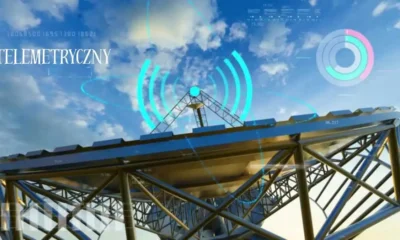GENERAL
Anheihe: China’s Secret Paradise Hidden in the Heart of Guangxi

Anheihe serves as a mysterious natural gem located within the core of Guangxi Province that remains off the radar of most people. This natural haven in China harbors its untouched beauty along with its rich biodiversity and its quiet, mystical character that makes it a rarely discovered gem in China. The absence of commercial tourist activity allows visitors to see unadulterated nature in this masterpiece. The unknown paradise of Anheihe starts to rise as a future dream destination because more travelers now want off-the-grid vacation experiences. This piece chronicles its seclusion along with its history and community lifestyle, which establishes it as a must-visit yet vulnerable location.
Where is this gem located?
Anheihes location anchors it inside the Guangxi Zhuang Autonomous Region in China, where karst peaks emerge from lush landscapes. The less popular destination, Anheihe, operates independently from Guilin and Yangshuo despite its location within Guangxi province. Anheihe is located directly beside Vietnam’s border, where forested mountains and meandering river courses cradle the area. To reach Anheihe, visitors typically need to navigate through restrictively narrow roads and walk local trails because it is not connected to major urban areas. Its position in an isolated region has protected its untouched natural state, which provides the optimal space for explorers and nature enthusiasts.
The Cultural Significance of Anheihe
Anheihe exists as an unknown cultural center that maintains its importance for the Zhuang ethnic residents of the region. Through farming activities and fishing practices, the villagers remain deeply rooted in their land, in addition to participating in seasonal festivals for nature spirit worship. Traditional bamboo architecture, together with handcrafted items, demonstrates procedures that stretch back for centuries. Both ancient folklore and ceremonial dances appear during special occasions for members of the Zhuang community to share with visitors. The preservation of this cultural heritage must be fully respected. Visiting this location involves more than simple observation, as it requires an appreciation for those who safeguard the area.
Why does this paradise remain undiscovered?
The area remains hidden due to its distance from urban centers and its lack of marketing, while the local community desires to keep its natural beauty intact. The region does not receive any advertising promotion like Guilin or Zhangjiajie, as Anheihe lacks mainstream tourist brochures and billboards. Mass tourism is naturally restricted because of minimal to non-existent infrastructure, including hotels, paved roads, and guided tours. People who visit it can witness natural landscapes in their unadulterated state without facing overdevelopment or excessive crowds during their outdoor adventures.
The natural features
This location truly satisfies the deepest artistic wishes of painters who specialize in landscape art. Karst cliff formations reach tremendous heights above the emerald-colored valleys in this area, where rivers glide through historic forests covered in fog. Underground lakes and hidden caves decorate the region, though they await exploration. Nature in this area maintains a wild, untamed feel because the park lacks typical park settings, allowing visitors to partake in an intense spiritual encounter with the landscape. Every section of Anheihe displays breathtaking beauty with an untarnished and ageless character
Anheihe’s Biodiversity and Ecological Importance
This gem is not only visually stunning—it’s also ecologically vital. The region’s isolation has created a sanctuary for countless species of plants, birds, and small mammals. Biologists have identified endemic orchids, rare medicinal herbs, and migratory birds that nest exclusively in the cliffs of Anheihe. The dense forests also serve as a carbon sink, contributing to climate resilience in the region. Its streams support clean water systems that feed into broader ecosystems across Guangxi. Conservationists see it as a biodiversity hotspot and a model for balancing ecotourism with habitat protection. It’s a true living laboratory of China’s natural heritage.
Best Time to Visit Anheihe
Annual travel to this masterpiece of nature is possible, but travelers will experience the best climate during the spring months of March through May and the autumn months from September through November. Wildflowers produce a colorful bloom during spring, as swollen rivers transform the area with vibrant landscape beauty. Autumn in Anheihe brings cool weather conditions alongside brilliant autumn leaves and vivid blue skies that are ideal for photographers. The summer months bring heat along with occasional wet conditions, while winter remains tolerable, though it lacks vibrant colors. Local weather predictions combined with suitable clothing layers are essential because mountain climates have unpredictable temperature changes.
Interesting things to do there
Visitors will uncover experiences beyond scenic vistas when they visit Anheihe. Bamboo forests provide hiking trails that lead to limestone outcrop viewpoints where you can enjoy spectacular views of the environment. With a flashlight as a guide, you can discover hidden caves, while silent kayaking will lead you through rivers bordered by jungle land. Few explorers enjoy nature photography and bird watching while practicing wild camping in this area. Lucky campers can hear local guide stories after dark around the nighttime firelight, creating a true cultural exchange. This gem exists outside of modernized tourism because visitors encounter only nature and their inner selves through direct connections to both.
A transportation guide
The journey to this beautiful place presents its exciting element. The destination can be reached by flying into either Nanning Wuxu International Airport or Baise Bama Airport. Travel first by local bus or private vehicle transportation to the countryside residential areas of Guangxi province. The absence of roads necessitates continuing your journey by walking, cycling, or driving a motorbike since transportation alternatives are minimal. Offline navigation tools along with GPS systems should be used, as cell phone reception is weak. Travel requires patience, as you will face challenging dirt paths, river crossings, and slower-than-normal travel speeds. Once you arrive, the panoramic view will make the entire trip worthwhile.
Accommodation Options
Since Anheihe is remote, there are no luxury hotels or resorts. But that’s part of its charm. Nearby villages offer eco-lodges, guesthouses, and homestays that give you a taste of local life. You’ll wake up to birdsong, eat home-cooked meals, and fall asleep under a sky full of stars. Some travelers choose to camp in designated areas, practicing responsible leave-no-trace ethics. While amenities are basic—expect squat toilets and limited Wi-Fi—the warmth of local hospitality and the immersive natural setting make it worth it. Booking in advance through local networks or eco-tour platforms is recommended.
Is Anheihe Safe for Tourists?
Yes, Anheihe is generally safe, but like any remote adventure, caution is key. The terrain can be rugged, with steep paths and slippery trails, so proper footwear and physical readiness are essential. Wild animals are rare but not unheard of, so it’s best to hike in daylight and avoid wandering off-trail. Language barriers may arise, as few locals speak English, so having a translator app or guide can help. There are limited medical facilities nearby, so bring a personal first-aid kit. Respecting local customs and nature is crucial. As long as you’re prepared, Anheihe offers a peaceful and secure experience.
Conclusion
If you crave authentic adventure, raw beauty, and a break from commercial tourism, Anheihe should be on your 2025 travel list. It’s not a place for luxury seekers or casual tourists—it’s for explorers, photographers, hikers, and anyone longing to reconnect with nature. You won’t find five-star hotels, but you’ll find million-star skies. You won’t hear traffic, but you’ll listen to the wind, rivers, and birdsong. This Gem is a sanctuary, a reminder of how beautiful the untouched world can be. Visit it with care, wonder, and respect—and you’ll leave with more than memories.
-

 BIOGRAPHY7 months ago
BIOGRAPHY7 months agoBehind the Scenes with Sandra Orlow: An Exclusive Interview
-

 HOME1 year ago
HOME1 year agoDiscovering Insights: A Deep Dive into the //vital-mag.net blog
-

 HOME1 year ago
HOME1 year agoSifangds in Action: Real-Life Applications and Success Stories
-

 BIOGRAPHY1 year ago
BIOGRAPHY1 year agoThe Woman Behind the Comedian: Meet Andrew Santino Wife




























